Hydrangea: varieties, cultivation, reproduction
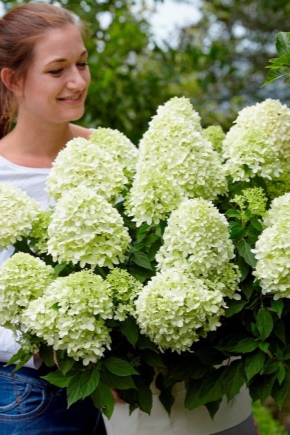
Today, the gardens are home to a huge variety of flowering crops. Among them, a special place is occupied by hydrangea, presented in a large variety of species and in well-deserved demand among many flower growers.

Description
Hydrangea is a plant from the hydrangea family of the same name. In the genus of culture, there are about a hundred species and even more varieties. These plants in their natural environment and in gardens are represented by small trees, shrubs and vines. Most species of the genus Hydrangea are found in the wild in North America and the Far East, however, the perennial crop is widespread throughout the world.
The beautiful plant got its name from the princess of the Holy Roman Empire. Later, botanists gave the scientific name Hydrangea, translated from Latin meaning "vessel with water". A similar analogy of the botanical name is due to the high moisture-loving nature of the ornamental culture. In Asian countries, you can find another unofficial name for hydrangea - "adzisai", which means "purple sun".
Today, there are varieties that can be grown not only in the garden, but also at home, which determines the increased interest of flower growers in this culture.
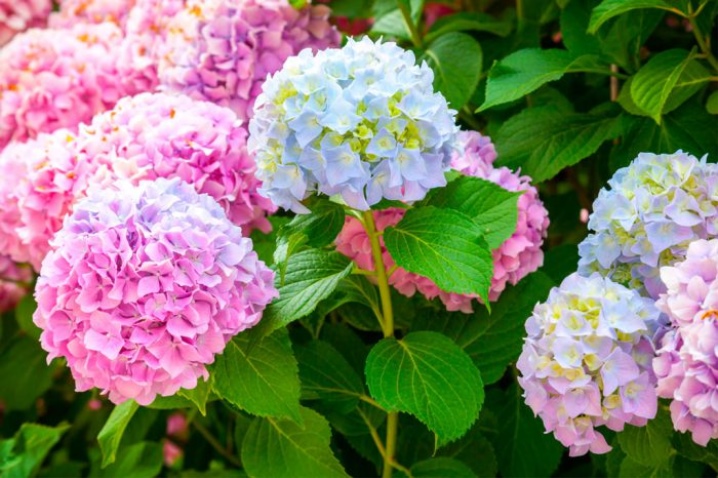
In its natural environment, hydrangea can grow up to 3-meter marks, resembling a compact and spreading tree. And also in the wild, liana-like varieties grow that stretch up the trunks of other tall crops growing nearby, such hydrangeas can grow up to 30 meters. Today hydrangea is presented evergreen and deciduous species, the latter are in greater demand in latitudes with a mild climate.
As for the appearance, the flower has opposite large leaves, which in most cases are oval in shape with a pointed top edge. Along the edge of the leaves, they have small denticles, in addition, veins are visualized on them.
The culture enters the flowering phase in the spring, continuing to delight the eye of gardeners with inflorescences of various colors until the arrival of the first frost... Hydrangea inflorescences can be in the form of a ball or shield, paniculate varieties are found, combined into a separate species. The inflorescences have 2 kinds of flowers. The first group includes fertile specimens, the second group is represented by sterile flowerswhich are usually placed around the edges. However, there are varieties of this culture that will have exceptionally fertile flowers.
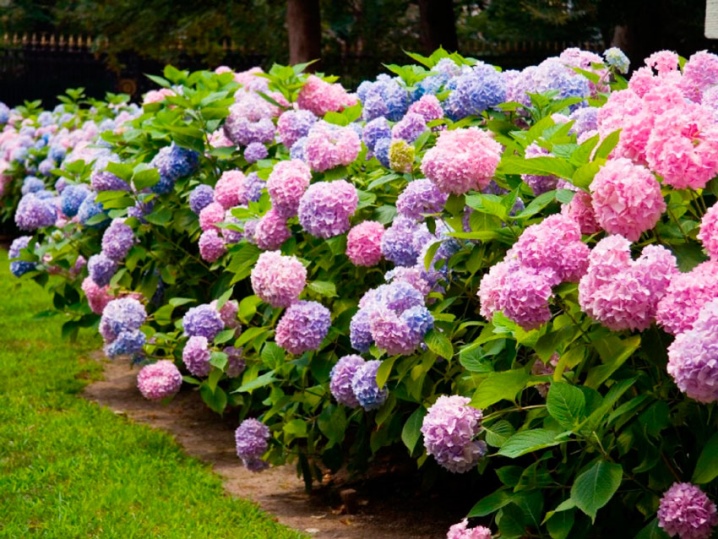
As for the color, it is provided for gardeners a wide color palette of plants that can be grown at home and in the garden. Among the most popular are lilac, white, pink, red, crimson and burgundy variations.
Hydrangea belongs to fruiting crops... In this case, the fruit is a box with chambers located inside, there can be from 2 to 5. Small seeds ripen inside each of them.
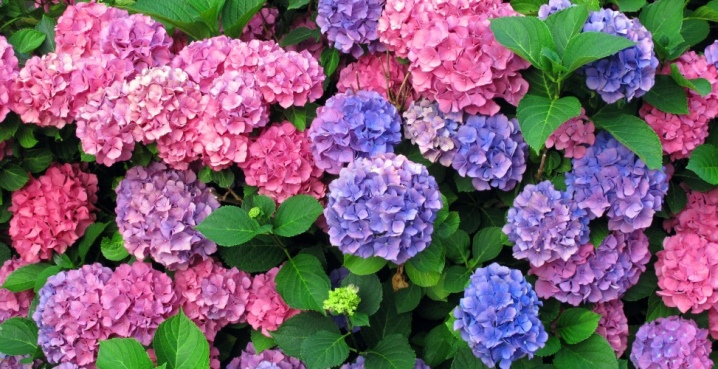
Views
Today gardeners practice growing hardy varieties as well as flowering crops that need additional shelter for the winter.Among the most popular today, several types of hydrangea should be distinguished.
Paniculata
The way this species looks like determines its special popularity. The culture, developing, turns into small trees, which usually will be no higher than 2-3 meters in height. Paniculata (panicle hydrangea) is quite common in Asian countries, as well as in northern Russia. In its natural environment, the plant prefers places near forest edges, in addition, the hydrangea feels good in the thickets of the oak forest. The tree has an elliptical shape, at the bottom the culture seems more lush.
Inflorescences have a paniculate shape. Plants of this species are considered excellent melliferous plants, in addition, in the garden, hydrangea attracts attention with its aroma during flowering. Among the features of this species, it is worth highlighting the property to develop quite actively, in light of which, growing a panicle hydrangea in a flower bed, it will need to be trimmed regularly to maintain its decorative appeal.
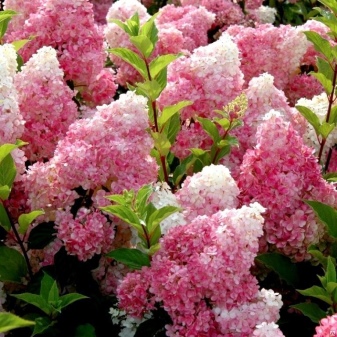
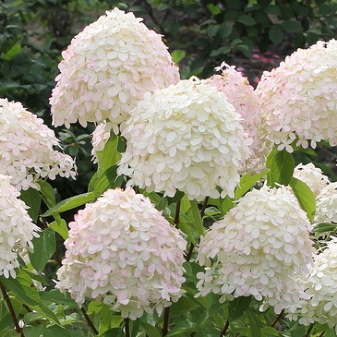
Large-leaved
A perennial species that belongs to the shrub type. These plants reach a height of 2 meters, the shoots of the hydrangea are erect, there is no fruiting. Varieties of this species can have white, blue, pink and even lilac colors of inflorescences, while the leaves are painted in a standard green shade. Plants enter the flowering phase later than everyone else, so you can catch large-leaved hydrangea in bloom from August to November.
The varieties of this species are notable for their high rates of frost resistance.
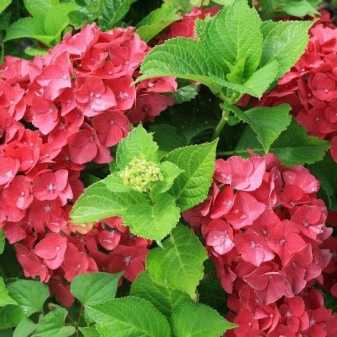
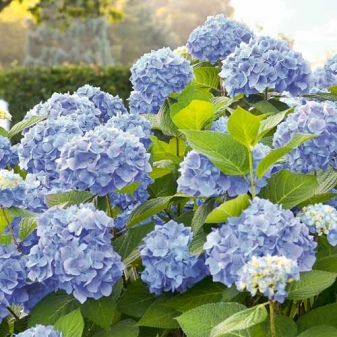
Tree-like
There are several more species names - wild or smooth hydrangea. The culture is notable for its frost resistance, in light of which it is rather actively cultivated in regions with severe winters. Hydrangea develops in the form of a shrub no more than 2-3 meters high. The shoots of the plant are erect, the leaves are rounded, the varieties are presented in a wide variety of colors.
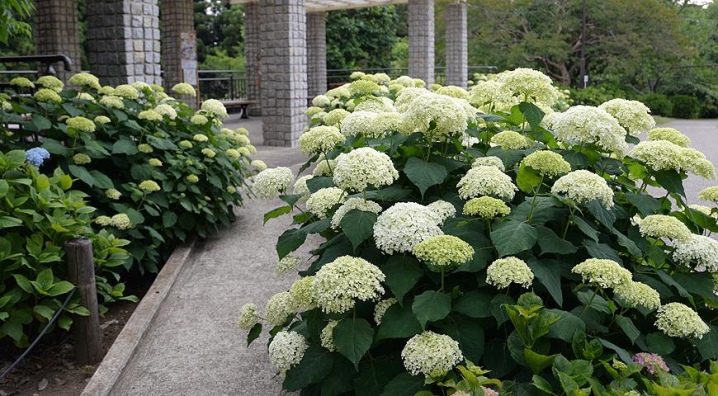
Pereshkovaya
A culture that has not yet become widespread in domestic front gardens. Hydrangea of this species is a liana, the length of which can reach 20-25 meters. Recommended for vertical gardening, winds well with a high support. Inflorescences are collected in scutes, their color can be white in all shades, as well as in various variations of pink. Another variety that is considered wonderful honey plant.
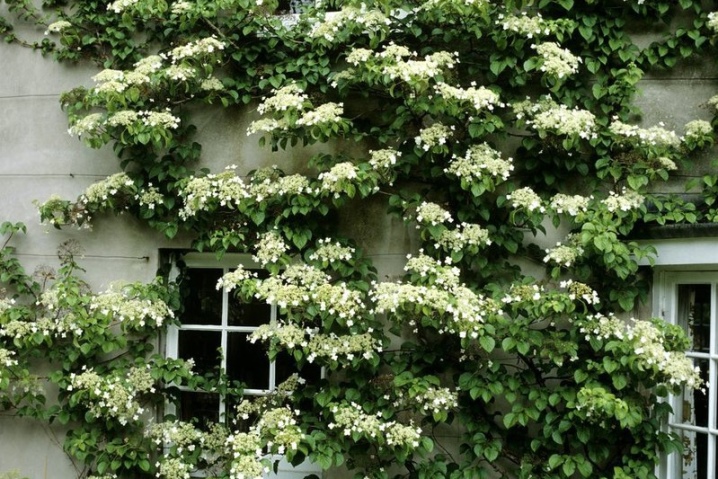
Dubolistnaya
This is a shrub that grows up to two meters, the shoots of hydrangea are reddish in color. The culture got its name due to the similarity of its leaves with the green mass of oak. The plant blooms with inflorescences of paniculate type, painted in white. The flowering phase occurs in early summer and ends in September.

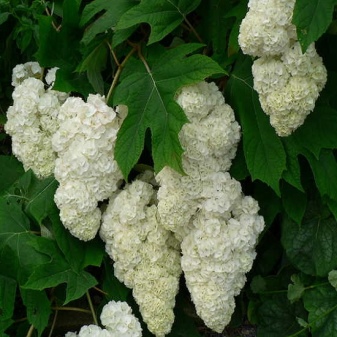
Radiant
Another species that, in the process of its development, forms a shrub no more than 2-3 meters high. Hydrangea leaves are oval in shape with a pointed edge. It blooms with white inflorescences in the form of shields. Flowering in this species is short, usually lasts one month from June. The culture has an extremely low resistance to negative temperatures, therefore to get a good result, the gardener will need to reliably cover the plant for the winter.
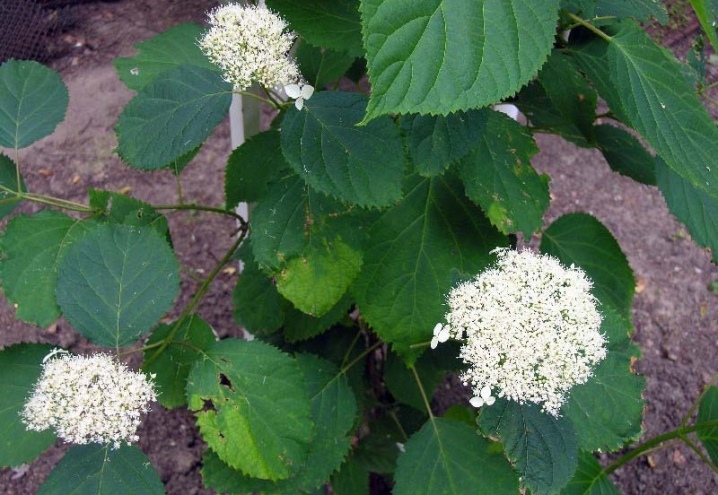
Ash
An upright shrub, usually two meters high. Green leaves are ovoid, in terms of frost resistance, the species shows average indicators.
Very often, with the help of this hydrangea, living flowering hedges are set up in dachas and in public places.
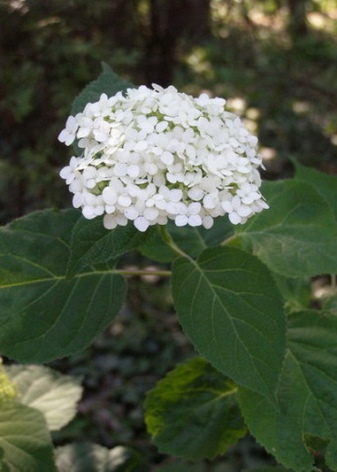
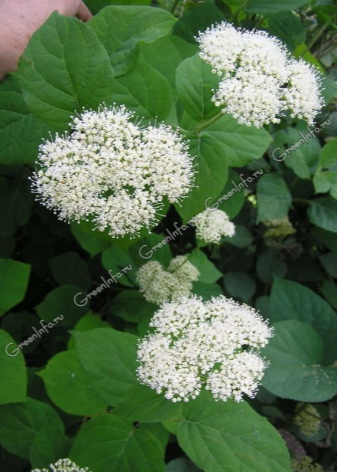
Serrated
A small tree-like shrub with a beautiful spreading crown. It is an annual with oval-shaped green foliage. Inflorescences in the flowering phase acquire a spherical shape. A similar version of hydrangea is considered the most beautiful due to the peculiarities of the color - in the middle, the flowers will have a blue color, and along the edge their shade becomes close to white.Flowering lasts from July to September.
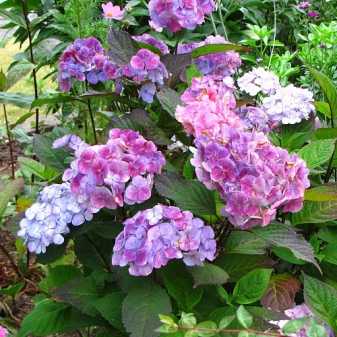
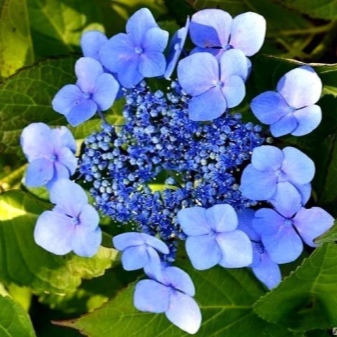
Hydrangea Sargent
A shrub whose height varies between 2-3 meters. The plant is actively developing in width, flowering falls at the end of summer. Inflorescences repeat the shape of an umbrella, flowers can be painted in purple and purple tones, after flowering they change color to white. The species is popular due to its frost resistance.
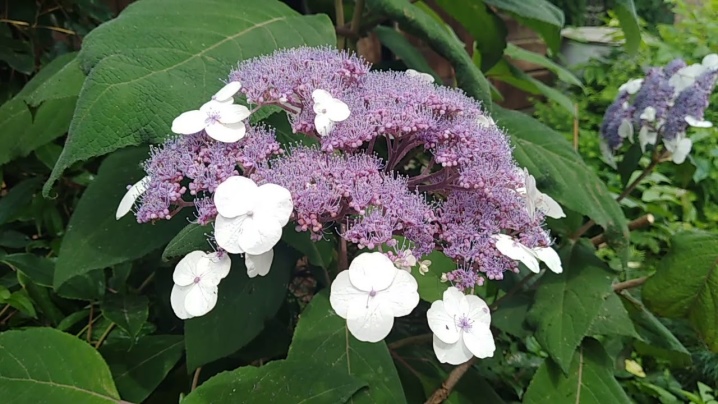
Popular varieties and their shades
Today, the huge variety of species includes no less different varieties of hydrangea. It is worth highlighting the most demanded ones.
Grandiflora
An actively cultivated crop that blooms in large sterile buds, resembling a pyramid. The color of the flowers is initially in a creamy palette, then smoothly changes to white. And at the end of flowering, hydrangea inflorescences become red-green.
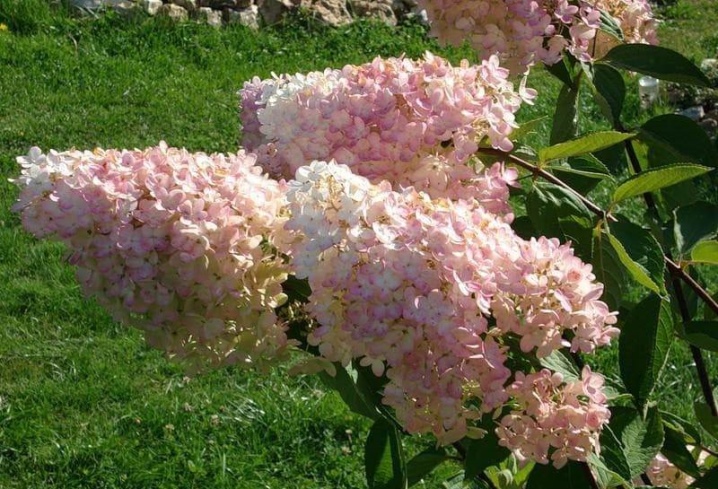
Brussels lace
A variety that will become a decoration of the garden in the light of the presence of a large number of flowers and inflorescences on the plant. It is a fruitful crop that loves to grow in a sunny area.
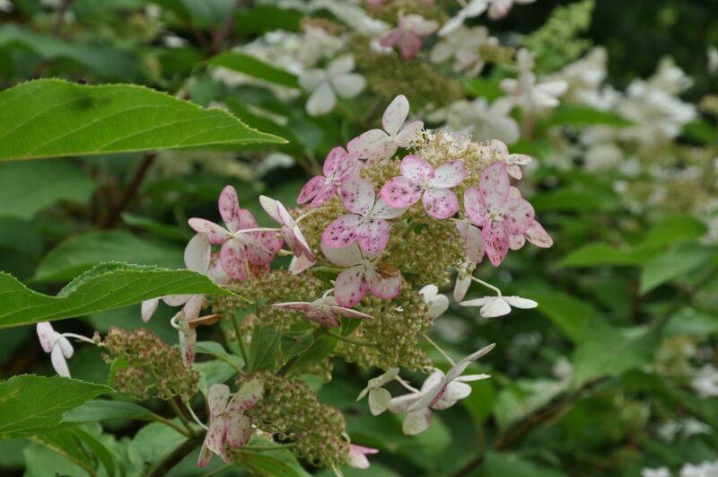
Kyushu
It is a frost-resistant plant characterized by a beautiful white bloom and a pleasant aroma. Hydrangea blooms for a long time, therefore it covers almost all summer months.
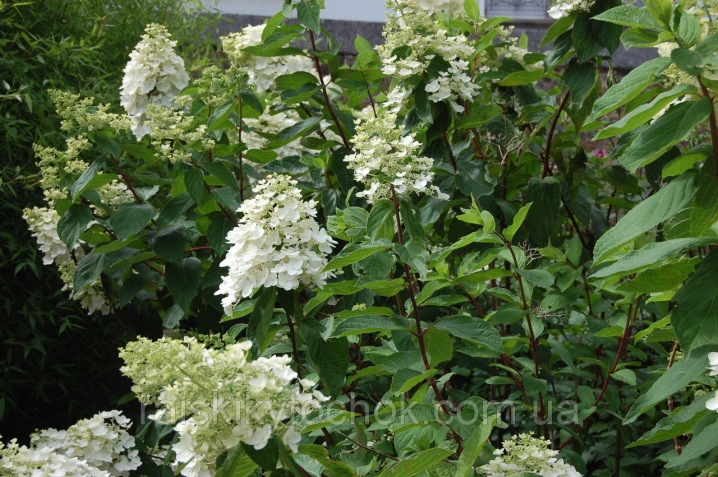
Limelight
The variety looks like a full-fledged shrub that can grow in size up to 2 meters. The inflorescences of the culture have the shape of a panicle, which can be 50-60 centimeters long. At the very beginning, the flowers will be green, later they will change it to cream or white.

Mathilda
Another hydrangea variety that can change the color of its flowers during the summer flowering phase.
Initially, the formation of inflorescences colored in cream tones will occur on the culture, after which the shades will smoothly turn into pink colors, and by the end of summer the culture will have red-green inflorescences.
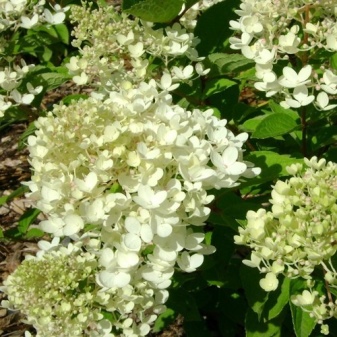
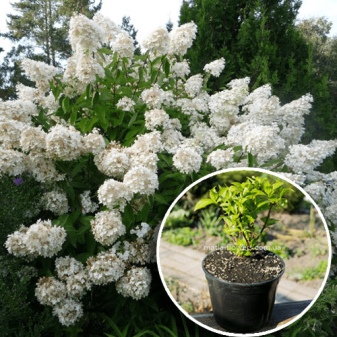
Pinky winky
When decorating a personal plot, gardeners very often give preference to a street variety with white cone-shaped inflorescences, which over time will change their color to a pink palette, continuing to remain fresh until October.

Expression
A frost-tolerant variety of hydrangea that blooms in double inflorescences, the color of which can be purple or pink, depending on the type of soil where the culture is developing.
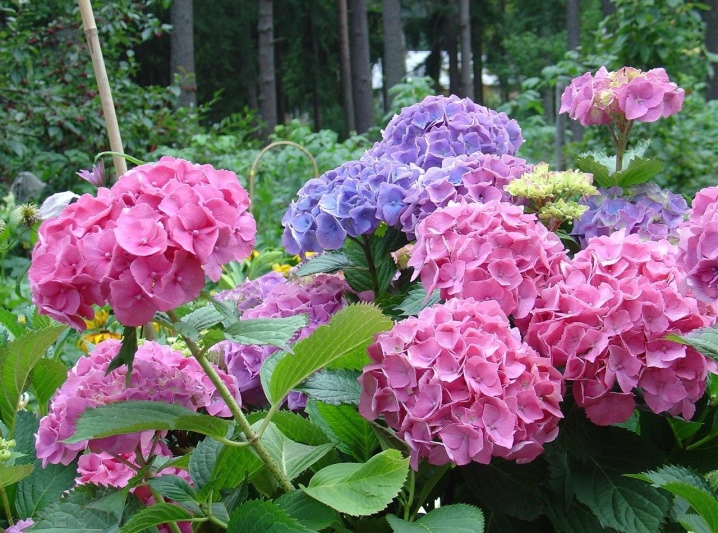
Ever Peppermint
A miniature variety that can reach a height of 50-60 centimeters. The plant is the result of selection by Japanese specialists. The culture grows quite quickly, the color of the inflorescences will depend on the type of soil in the garden.
In general, the crop will usually produce blue inflorescences that will have a light pink center, with the flowers usually being edged in white.
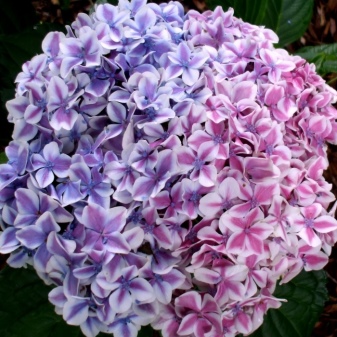

Red sensation
A hybrid variety of hydrangea, which will be slightly larger in size than the previous one, serving as a mother culture. A notable feature of the plant is considered the color of the stems, which will be burgundy.
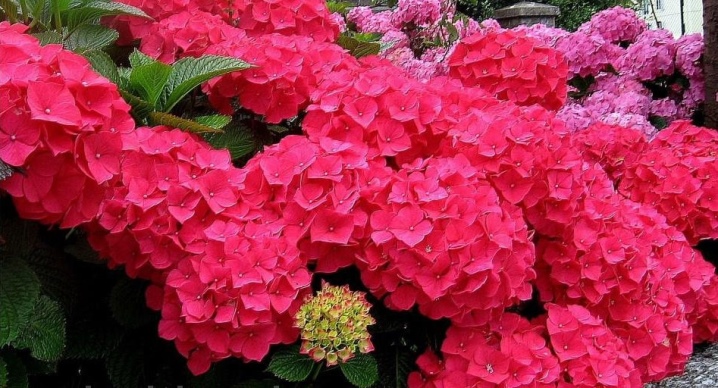
Annabelle
A representative of a tree culture, notable for its resistance to harsh winters. Usually, the shrub is stretched to a height of no more than 1 meter, the inflorescences repeat the shape of the ball, the color will depend on the acidity of the soil.

Sterilis
A valuable variety, in demand due to its abundant flowering, which lasts until the end of October. The inflorescences of the variety will initially be colored green with a white tint, then the flowers will become completely white.
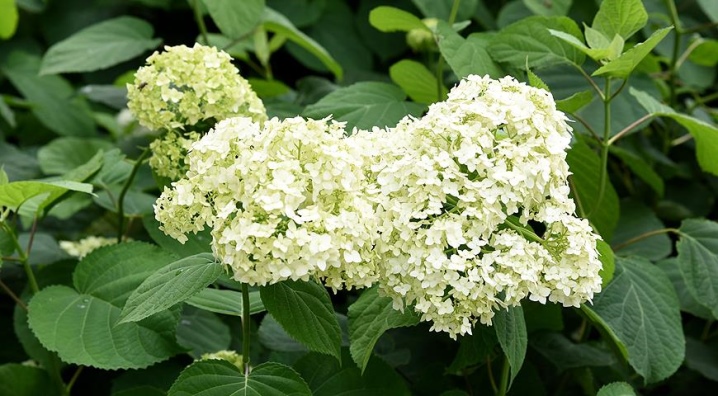
Hayes starburst
Another type of culture that blooms with delicate white flowers, which develops in the form of a shrub up to 150 centimeters high.

Incrediball
A variety of hydrangea that is often used to create beautiful garden compositions as it is combined with many garden plants. The culture develops very large flowers with a beautiful white color, while the inflorescences resemble a weightless ball in shape.

Landing
Plants are planted in early spring. In some regions where winters are not accompanied by a severe cold snap, the material sprouted at home is allowed to be planted in open ground in the fall, choosing an already permanent place for culture.
When placing hydrangeas, it is worth remembering that all its varieties belong to light-loving cultures... For proper growth and development, the flower will need regular contact with direct sunlight. An alternative can be areas with diffused light or partial shading, which are suitable for weaving varieties, groundcover and tree species.
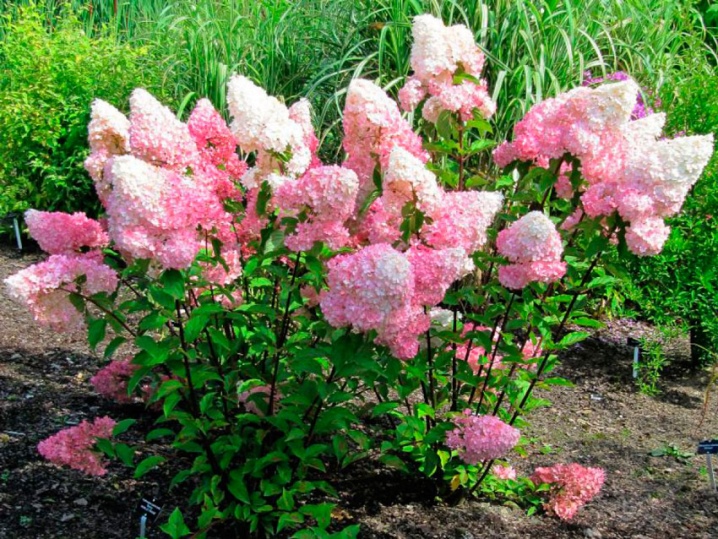
The rooting of flowering crops is recommended into loose soil, rich in composition in organic fertilizers. As for acidity, the priority is the earth with neutral or slightly acidic pH.
With regard to suitable crops for growing nearby, it is worth avoiding placing hydrangeas next to plants that have a shallow root system, as crops will compete as they develop in terms of extracting water and nutrients from the soil.
The hydrangea planting algorithm includes several points.
- To root the seedlings, you need to make a hole. The optimal sizes of the planting pit will be values that are 2 times the size of the plant roots.
- Planting hydrangeas outdoors should be carried out together with an earthen clod from a container or pot in which the plant grew at home or was purchased.
- After placing the culture in the hole it is sprinkled with soil, tamped. Organic complex fertilizers can be applied to the bottom, the use of peat is encouraged. It is best to leave part of the root system above the ground.
- The final stage of planting will be the shelter of the root system, for this, the flower is advised to mulch with sawdust.
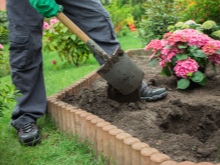
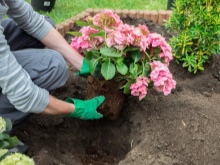
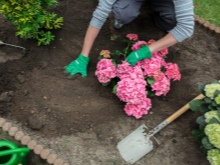
Follow-up care
After planting hydrangeas, the gardener needs to carry out a set of simple, but mandatory agrotechnical measures.
Watering
Regular hydration of the plant is one of the important nuances to ensure proper growth and flowering. In the summer months, in intense heat, it is recommended to water the plant at least 2-3 times a week. For an adult hydrangea, the optimal amount of liquid will be the volume of water. in 30-50 liters.
Water for irrigation should be harvested in advance so that the liquid is warm and settled, especially if tap water is used. A layer of mulch will keep moisture in the soil for several days.
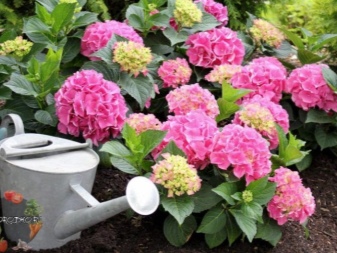
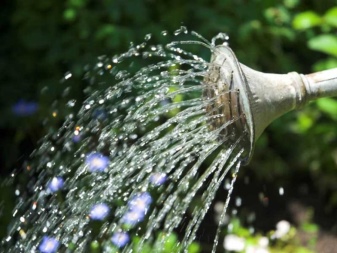
Top dressing
The introduction of important fertilizers will allow you to have a richly flowering and healthy crop on the site. Therefore, after planting and applying the first part of dressings, after rooting, the introduction of organic complexes should be carried out at least twice a year. The first group of fertilizers is usually applied in the hydrangea flowering phase, the second part will be needed by the plant after it has faded, that is, in the fall. In the spring, it is recommended to use a liquid fortified composition based on urea at the rate of 2 grams of substance per 1 liter of water.
For one adult plant in the spring, you will need to use at least 25 liters of such a liquid fertilizer.

Some gardeners additionally feed hydrangeas in the summer - during this period, slurry is usually used as a top dressing. In the fall, complex formulations are used for flowering horticultural crops.
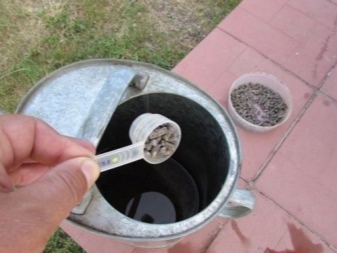
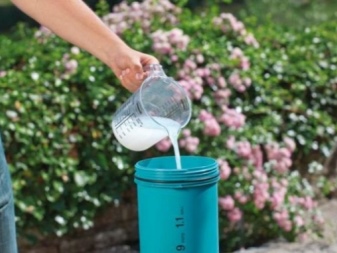
A flower such as hydrangea has the unique ability to change the color of its inflorescences when adjusting the acid-base balance of the soil. To change the color, alkali (lime, dolomite flour) is used, which gives the flowers red and pink hues. PH neutral soil will allow you to achieve the presence of crops with flowering in white or cream color on the site.
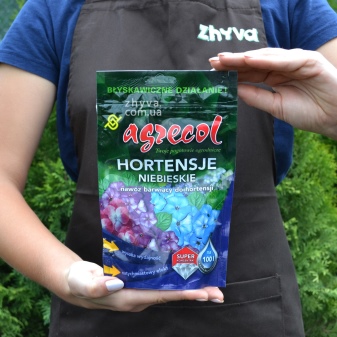
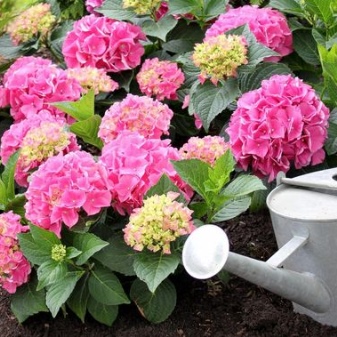
Pruning
Most hydrangea varieties need to be pruned, but after reaching 3 or 4 years of age.The essence of the work is to trim the stems that will bloom this season. As a rule, these works are carried out in the spring, but before the first buds appear. Besides, it is important to choose the moment for cutting the crop before the start of the movement of the juices, in order to avoid the death of the plant.
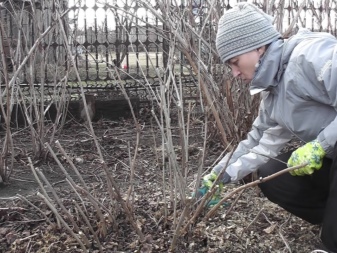
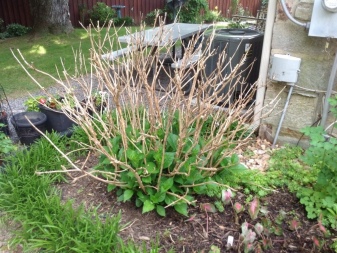
The longest shoots are subject to shortening. As a rule, paniculate, treelike, variegated, creeping and herbaceous crops are trimmed by shortening the branches by one third.
Some viable material can be used to propagate the crop by cuttings.
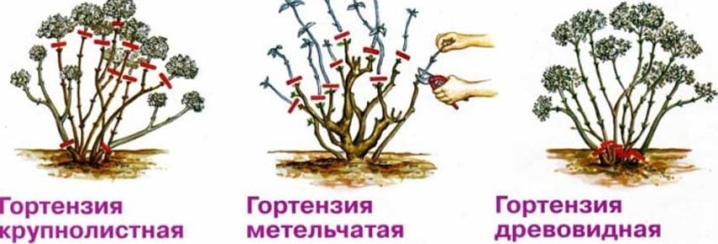
And also hydrangea requires sanitary pruning in the fall. During this period, it is worthwhile to carry out work carefully, without removing too much of the healthy branches, however, damaged or dried out areas should be separated from the plant as a whole.

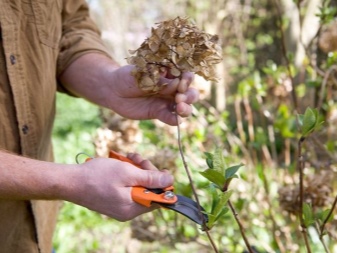
Disease and pest control
In general, most of the species and varieties of hydrangea are notable for their resistance to diseases and pests. However, some ailments can still be dangerous to the plant, for example:
- fungal diseases;
- viral infections.
And also the deterioration of the condition of the plant may be associated with errors related to agricultural technology. Very often, the culture suffers from excess moisture, direct sunlight, and a lack of nutrients in the soil.
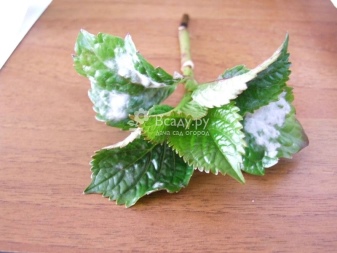

Let's highlight the most common ailments affecting hydrangea.
Dry blackening of leaves
A manifestation of pathology is the appearance of dry brown spots on the green mass of the plant, which increase in size over time. Such troubles in most cases are the result of using hard water for irrigation, as well as direct sunlight on the plant at noon.
If you organize a shade for the plant, as well as change the watering liquid, such problems can be avoided.
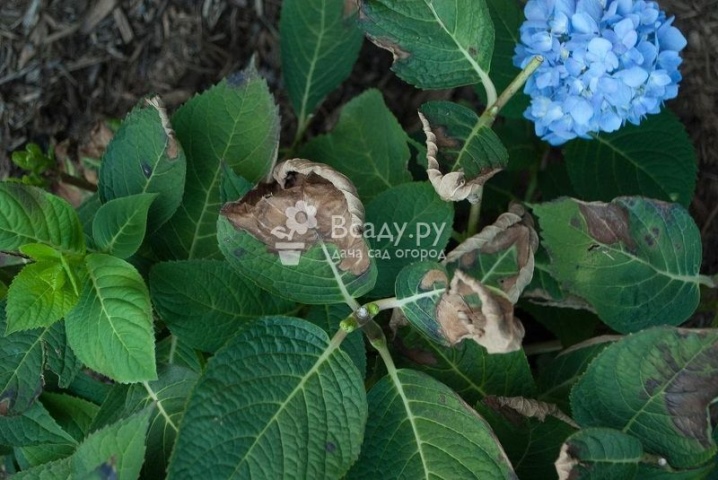
Wet blackening of leaves
The green mass becomes soft, gradually changes color to dark due to sharp fluctuations in air temperature, as well as the rooting of the flower in heavy soil, excessive moisture. Adjusting agrotechnical measures or transplanting a hydrangea will help normalize its condition.
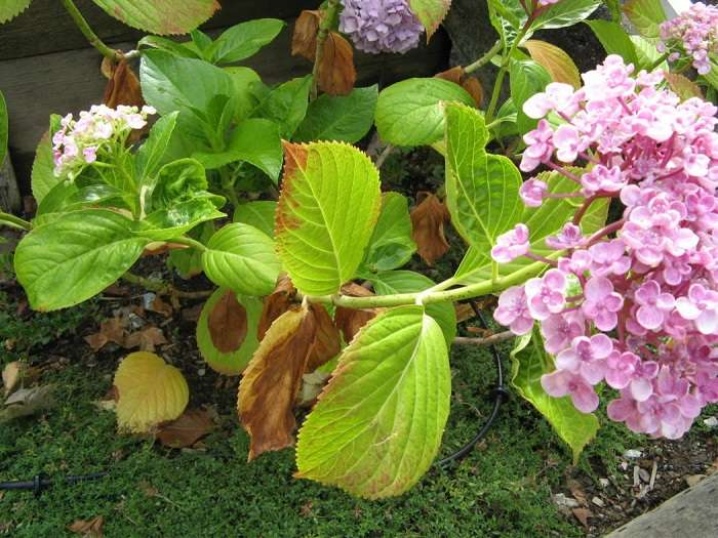
Chlorosis
Signs of the disease will be a change in the color of the green mass. This common disease is characterized by a light shade of leaves with dark veins. And also the ailment may relate to changes in the size of leaves and flowers, they become small.
The reason for the development of this phenomenon is metabolic disorders. For the treatment of hydrangeas, store-bought iron-based preparations are used. Effective in this case will be Antichlorosis, Agricola, Ferovit.
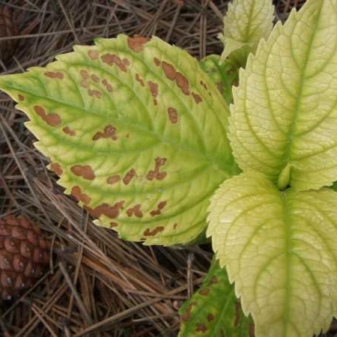
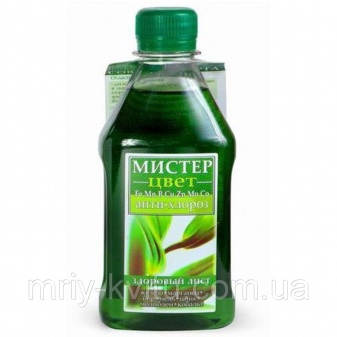
Gray rot
A fungal disease that affects the integument of the plant in such a way that they become soft and watery. High temperatures dry out the lesions, and neoplasms with a fungus form in their place. Rainy weather and stagnant moisture can provoke the development of the disease. Culture treatment is carried out Fundazol, as well as the separation of the affected areas from the plant - the gardener, if necessary, will need to additionally cut off unhealthy inflorescences.
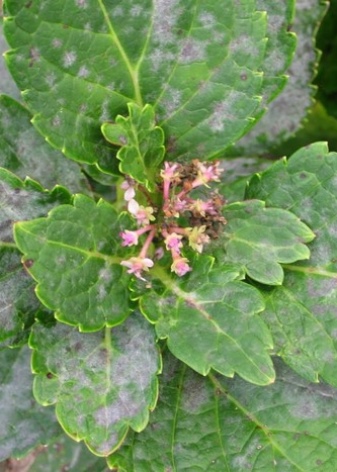
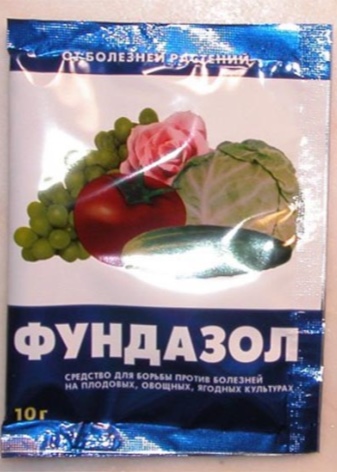
Peronosporosis
Symptoms of the disease are yellow spots that turn dark over time. To get rid of the fungus, the hydrangea is treated with a solution based on copper sulfate.

Powdery mildew
It is possible to determine that the plant is affected by this disease by the presence of yellow-green spots, on which a gray bloom gradually appears, after which the affected parts of the hydrangea die off. To save the garden culture, it is necessary to process its aboveground part "Fitosporin-M" or other store-bought composition for the destruction of the pathogen of powdery mildew.
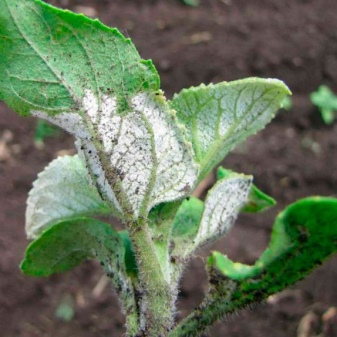
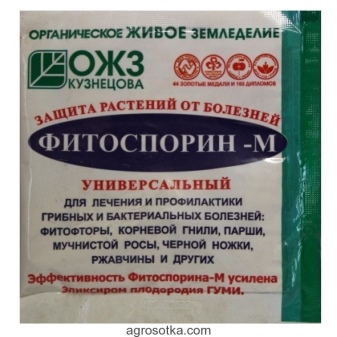
Septoriasis
The disease is manifested by the appearance of brown spots on the green mass of perennial and annual hydrangeas, which, without timely intervention, can lead to the death of the entire culture. Treatment of the disease is carried out copper-containing compounds.

Among insects that pose a danger to culture, it is worth highlighting:
- nematode;
- spider mite;
- aphids.
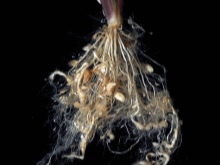

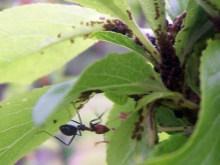
The first thing a gardener will need to do when detecting insect pests on a plant is to treat the aboveground part of the hydrangea with insecticides. The following preparations will help preserve hydrangea in the garden, as well as destroy pests:
- Akarin;
- "Commander";
- Tanrek.
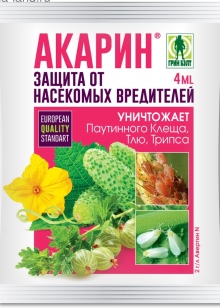
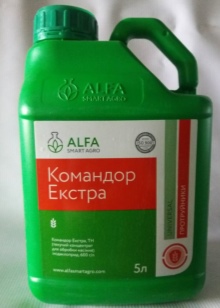
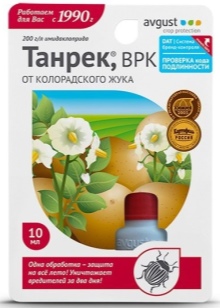
Preparing for winter
With the arrival of autumn, after the hydrangea leaves the flowering phase, it will need to be prepared for winter. Crops rooted in open ground are subject to sanitary pruning, some varieties will need to be tied up. All inflorescences in ampelous and other varieties must be cut off., so that when wet from rain or snow, they do not lead to the breaking off of branches from gravity.
At the base, the bushes and trees of hydrangeas must be earthed with garden soil, and also covered with a layer of mulch, since even in the most resistant species, the root system does not like freezing temperatures. As a rule, work on the shelter is carried out in the fall, in October, after the first frost on the ground. In addition to mulching the trunk circle, young trimmed bushes are sprinkled with dry earth or covered with roofing material.
It is recommended to additionally fix the covering material on the ground so that it is not carried away by strong gusts of wind.
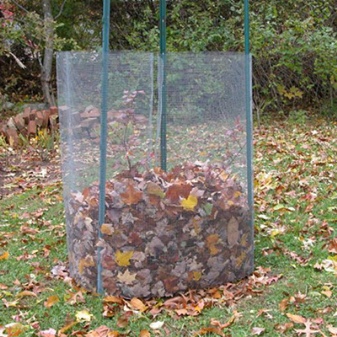

Adult plants are covered for the winter according to the following scheme:
- a metal frame is formed around the plant from a grid in the shape of a cylinder at a distance of 20-25 centimeters from the bush;
- inside the mesh is filled with dry foliage;
- from above, the hydrangea is covered with spunbond or other raw materials.

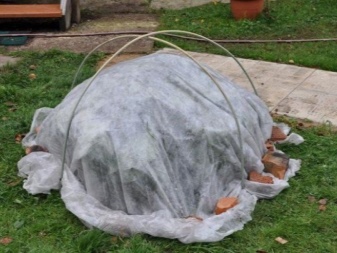
Reproduction
You can get a new plant in your garden in several ways.
Germinating seeds
Most often, this option is used to obtain species of hydrangeas. Generally this method does not imply any complex activities, however, it will be the longest in time. The collected material from crops that grow in the garden is sown in the fall in a container with nutrient soil mixture, moistened and covered with a film to create a greenhouse effect. Germinate planting material at room temperature, regularly moistening and airing.
The emerging seedlings must be dived twice, as they grow, planting one sprout in separate containers. At home, a seed culture is germinated for two years, gradually hardening, and then, if necessary, rooted in the garden.

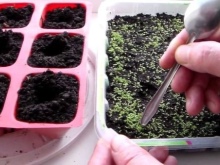
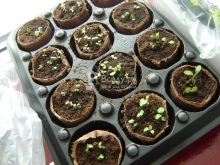
Cuttings
The collection of material can be carried out at any time. Cuttings with two nodes will be the optimal material for planting. They should be cut at an angle. The collected cuttings are rooted in greenhouse containers with soil consisting of peat and sand, to a depth of no more than 2-3 centimeters. Further care is reduced to regular humidification and ventilation... Well-rooted material collected in spring can already be planted in open ground by autumn.
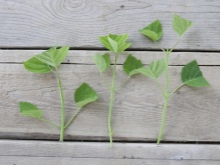
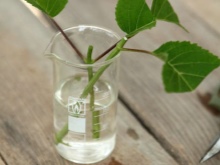
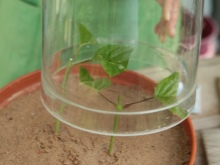
Dividing the bush
Work on the separation of the viable part from the mother plant is carried out at any time. To separate a part from the hydrangea, it must first be removed from the ground. Then it is necessary to separate so many parts that each has a resume point.
After carrying out all the work, the resulting crops can be immediately rooted in the garden.

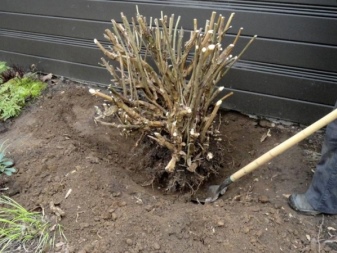
Layering method
To carry out reproduction in this way, you should choose the tallest and strongest shoots from the garden culture, tilt them to the ground and dig them into a special trench. Above the soil surface should remain at least 15 centimeters of escape. In this state, the plant should overwinter one winter, after which the well-rooted parts of the culture can be separated from the mother bush and planted separately in a permanent place in the garden.
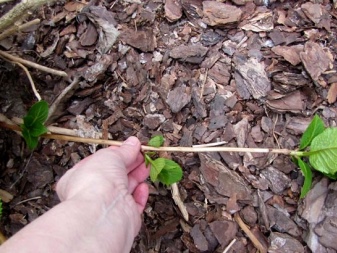
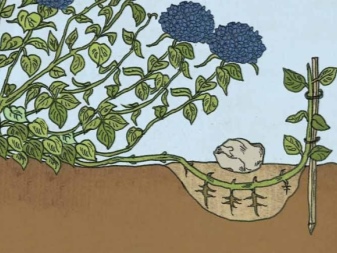
Examples in landscape design
It will be possible to decorate the lawn in front of the house attractive a composition of snow-white hydrangea and evergreen juniperthat will be in harmony with each other without requiring any addition.
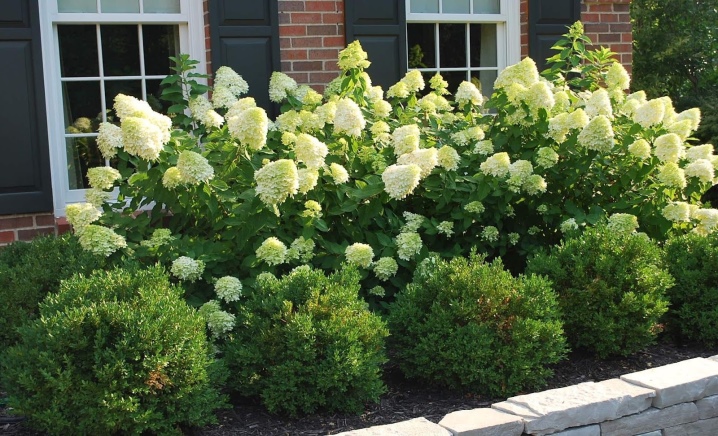
With the help of spreading hydrangea bushes in the garden, you can create flowering hedge, which will help to zone the territory, and will also become an attractive accent in the general style of garden landscape design.
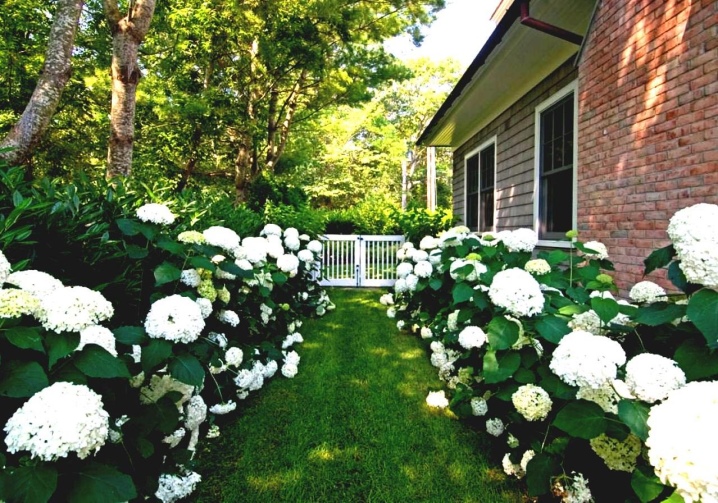
Blooming hydrangea can be used as an attractive ingredient when creating in the garden mixborder, due to its exquisite and long-lasting flowering, the plant will complement the composition, and also emphasize its attractiveness.
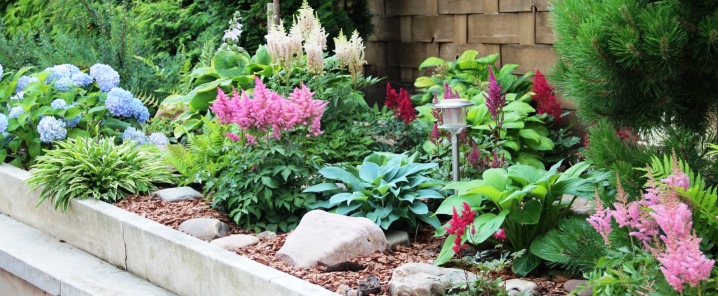
The following video will tell you about the care, planting and pruning of hydrangeas.



































































The comment was sent successfully.